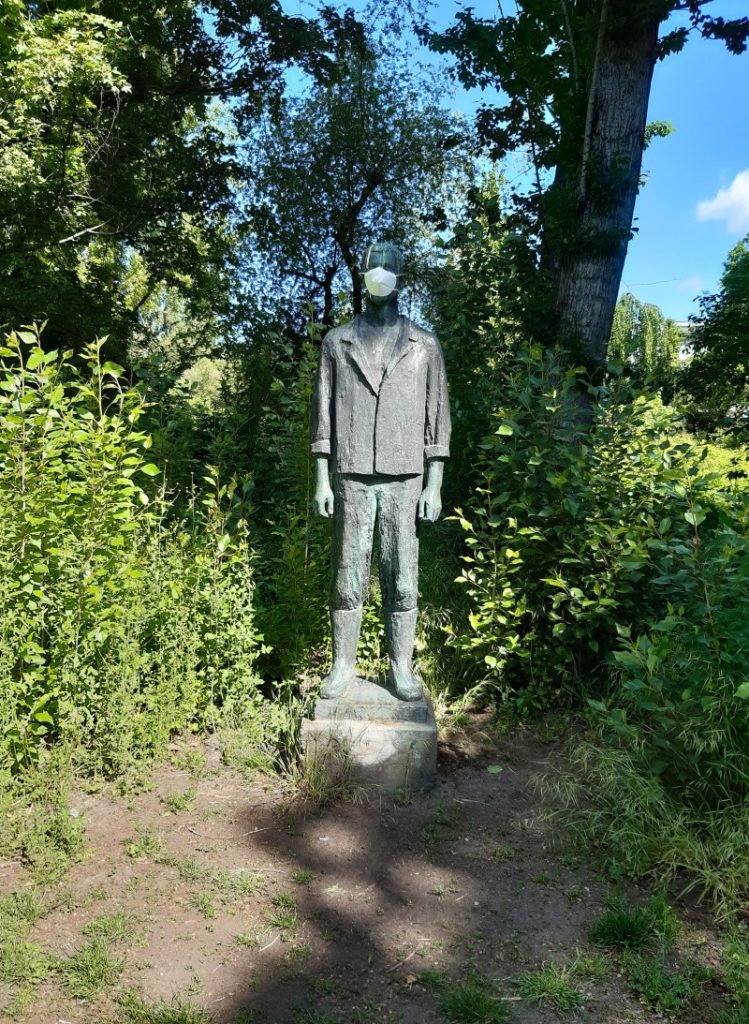
Images of a Treacherous Idyll
Carola Jüllig | 23 March 2021
In Germany, the Covid-19 pandemic first upended everyday life one year ago. The first lockdown in the Federal Republic started in March 2020, and today politicians are still searching for ways out of the second one. The restrictions imposed to fight the pandemic have left their mark on society. In this series, five head curators at the Deutsches Historisches Museum reveal how the coronavirus pandemic has been documented in the collection. Carola Jüllig, head of the Photo Collection and the Picture Archive, explains that one thing stands out above all: There are no people in the photographs.
It seems that many people understood very quickly just how profoundly the pandemic and its effects would transform our society. To live in a wealthy country used to choice and suddenly see row after row of empty shelves at the supermarket was certainly one of the starkest experiences – it was a theme that dominated the daily news. It is no surprise then that our first ‘Covid picture’ was a photo that impressively captured this new and unfamiliar situation. This was followed by a photo about ‘toilet paper’, another ‘hot topic’ in spring 2020. We received gifts of more than one hundred photographs about Covid – by members of the public who attentively observed and captured what moved us, be it positive or negative.

Empty shelves in the Metro supermarket in Schwelm, 19 March 2020 / DHM © Gebhardt, Angelika

Notice stating that toilet paper is in stock at a Rewe supermarket in Teltow, 6 May 2020 / DHM © Kühne, Holger
Apart from the sudden onset of toilet paper hoarding, other motifs started to appear in photographs: a country, a city that had truly come to a standstill. The daily frenzy of activity, so typical of Berlin, gave way to an oppressive calm, which affected both the public sphere and the way in which people organised their private lives. But the changes also brought opportunities to experience this exuberant and often stressful city in new and different ways. The notorious Berlin humour also came into its own during the pandemic.

Berlin’s Tegel airport, 10 May 2020 / DHM © Kühne, Holger

Sculpture ‘Young Worker’ with face mask at the Weißensee lake, May 2020 / DHM © Marr de Arenas, Liane
Not all new accessions to our Photo Collection were from Berlin: On a bicycle journey along the former ‘German-German’ border in May 2020, an amateur photographer took an array of pictures reflecting the responses to the pandemic and the preventative measures. His pictures are devoid of human presence – a motif that also dominates in the other photographs: There are no people – anyone who could, complied with the slogan ‘We’re staying at home’.

Notification about Covid social distancing rules at a carousel, Sonneberg, 7 June 2020 / DHM © Delius, Peter
Complementing these gifts from the public, photographers at the Deutsches Historisches Museum created extensive series with a range of different images. Here again, there are no people to be seen.

Empty S-Bahn carriage with hygiene notices, Berlin, 25 April 2020 / DHM © Desnica, Indra

Masks obligatory, Berlin, January 2021 / DHM © Ahlers, Sebastian
But the museum also purchased a more artistic photography project. With her series ‘It’s Your Climate too – Afterimages of a Pandemic’, the Berlin-based photographer Dagmar Gester took some arresting pictures. She focussed entirely on an object that was omnipresent in the first lockdown: the white and red barrier tape, which seemed to extend through the whole of Berlin, making the restrictions imposed on public life starkly obvious. During an unusually warm and sunny spring, Berlin suddenly looked as if it had been scrubbed clean – up above: a bright blue sky without a single vapor trail, and down below: parks and playgrounds that were devoid of humans. Images of a treacherous idyll.

DHM © Gester, Dagmar

DHM © Gester, Dagmar